
|
Helio- and Asteroseismology
|
 |

|
Helio- and Asteroseismology
|
 |
|
Homepage |
Methods of helioseismology can be divided into two classes: global and local. The more traditional technique of global helioseismology consists of measuring the frequencies of the modes of oscillation and searching for a seismic solar model whose oscillation frequencies match the observed ones. This reveals the Sunís large-scale structure and rotation as a function of depth and latitude. To complement global helioseismology, new methods of local helioseismology are being developed to make three dimensional images of the solar interior. The basic idea is to retrieve information at depth from the time it takes for solar waves to travel between any two surface locations.
Global helioseismology has provided by far the most precise tests for the theory of stellar structure and evolution, implying, in particular, a revision of the standard model of particle physics to solve the solar neutrino problem. Today, the most exciting aspect of helioseismology is the search for clues regarding the origin and variability of the Sunís magnetic field, possibly the most important unsolved problem in solar physics. The general belief is that a dynamo process is responsible for the solar magnetic cycle. According to this scenario, magnetic field lines are stretched and twisted by internal shearing motions. Therefore, it is essential to map internal mass motions, structural asphericities, and their temporal variations. Global helioseismology has already provided some fundamental results, revealing regions of rotational shear in the Sunís interior, solar-cycle variations in the rotation rate, and mysterious quasi-periodic changes at the base of the convection zone.
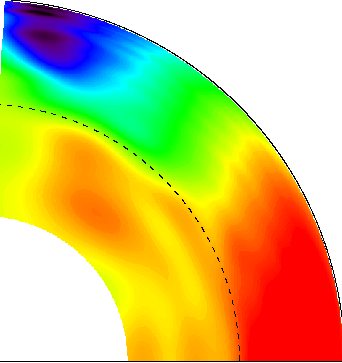 |

|
|
Internal solar angular velocity (red is fast near the equator, blue is slow) |
Solar-cycle variations in rotation versus time and latitude |
The next advances are expected to come from local helioseismology, which, although still a young science, has already pinpointed a mechanism for the latitudinal transport of the magnetic flux that could determine the period of the solar cycle. Detailed 3D maps of the upper convection zone provide new insights into the structure, evolution and organization of active regions and convective flows. In yet another application, local helioseismology can be used to construct maps of active regions on the far side of the Sun. These few examples illustrate the richness of the science possible with local helioseismology. In all these cases a taste of the possibilities has been provided, but better data and further developments in the technique are required to realize the full potential.
 |

|
|
Wave-speed perturbations below a sunspot |
Map of convective flows just below the solar surface |
An important technological step for helioseismology will come with the HMI instrument on the Solar Dynamics Observatory of NASA to be launched in 2008. With a high spatial resolution over the entire visible solar hemisphere, HMI is the first instrument specifically designed for local helioseismology. Later, in about one decade, ESAís Solar Orbiter should give access, for the first time, to the subsurface structure and dynamics of the Sunís polar regions. With these new observations, will come the need for improvements in solar modeling. In particular, theoretical studies and numerical simulations will be required to understand wave propagation in strongly magnetized fluids, a necessary condition for the application of local helioseismology to solar active regions. Local helioseismology is very much under development today and promises many more discoveries. Among the most ambitious goals is to directly image the magnetic field in the solar interior.
Asteroseismology, the study of global oscillations on distant stars, is entering a very exciting period of discoveries. Many stars, covering a wide range of masses and evolutionary states, are known to exhibit oscillations. Only in the last few years, however, has it been possible to detect oscillations on Sun-like stars using sophisticated spectrographs on large ground-based telescopes. Stellar oscillations have considerable diagnostic potential and allow stellar mass and age to be determined with unprecedented precision. Such knowledge for a sufficient sample of stars will revolutionize stellar evolution and galactic evolution studies. Asteroseismology has also the potential to constrain internal stellar rotation and locate the borders of convection and ionization zones . Such information would help understand dynamo-generated stellar activity cycles and the solar-stellar connection.
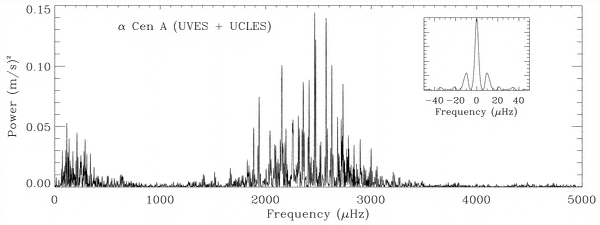 |
||
Oscillations on Alpha Cen A (Butler et al., ApJ 2004, VLT+AAT) |
These exciting possibilities for the study of stellar structure, evolution, and activity will be fully realized only once observations become available for a large sample of stars. The precision on the frequencies of the global modes of stellar oscillations, however, is very much limited by available telescope time, which is why dedicated space telescopes are an attractive solution to provide long-term coverage of many types of pulsating stars. High precision photometry from space is expected in 2006 with the launch of COROT of CNES. The field of asteroseismology will make much progress in the following decades with more ambitious missions like NASAís Kepler and possibly ESAís Eddington. As in the case of helioseismology, there is a strong need to improve our understanding of the oscillations and how they interact with the magnetohydrodynamical processes in stars.
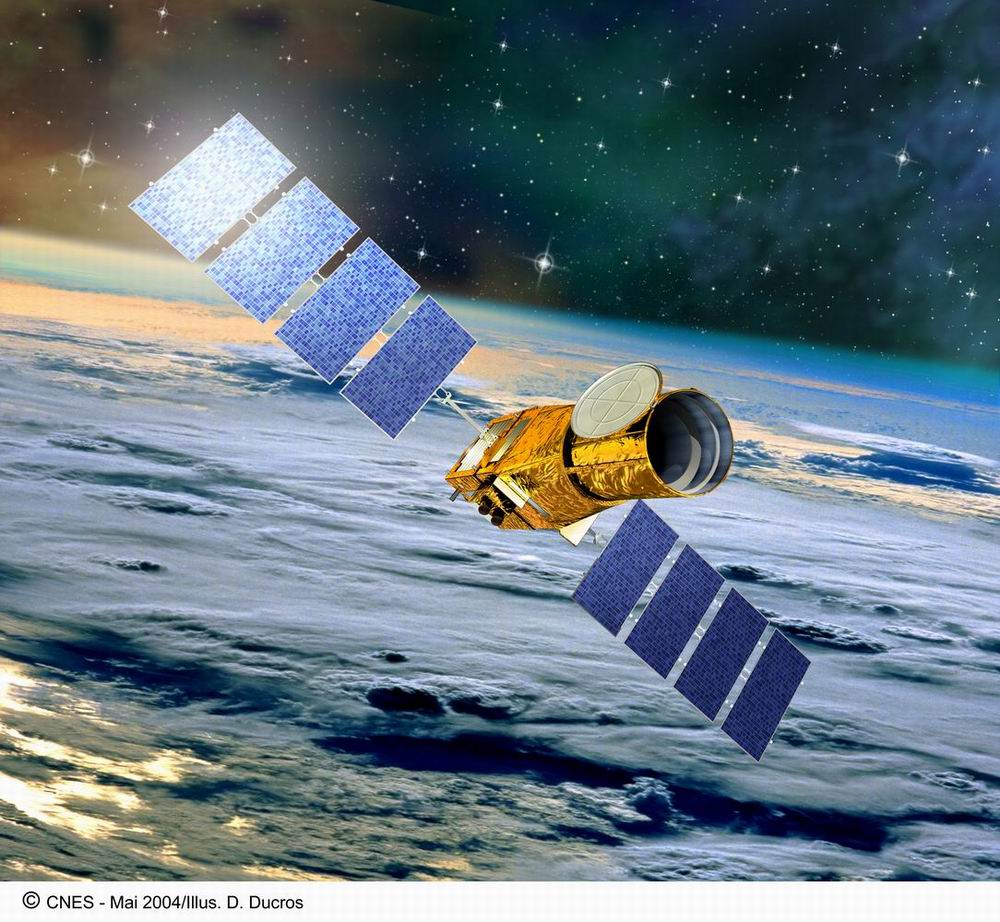
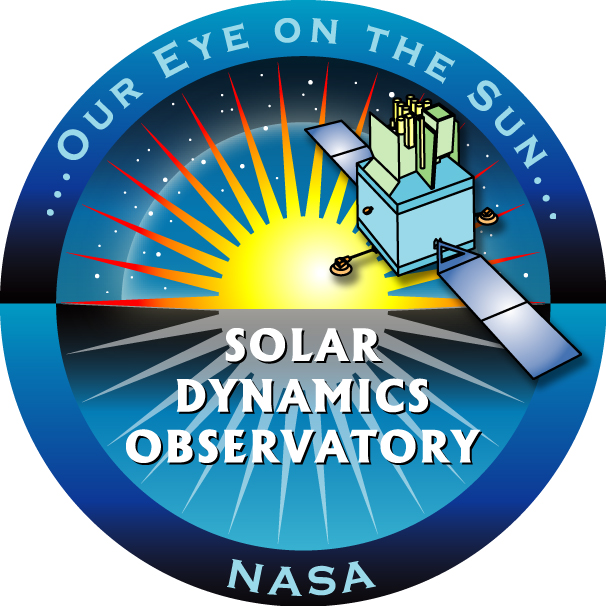
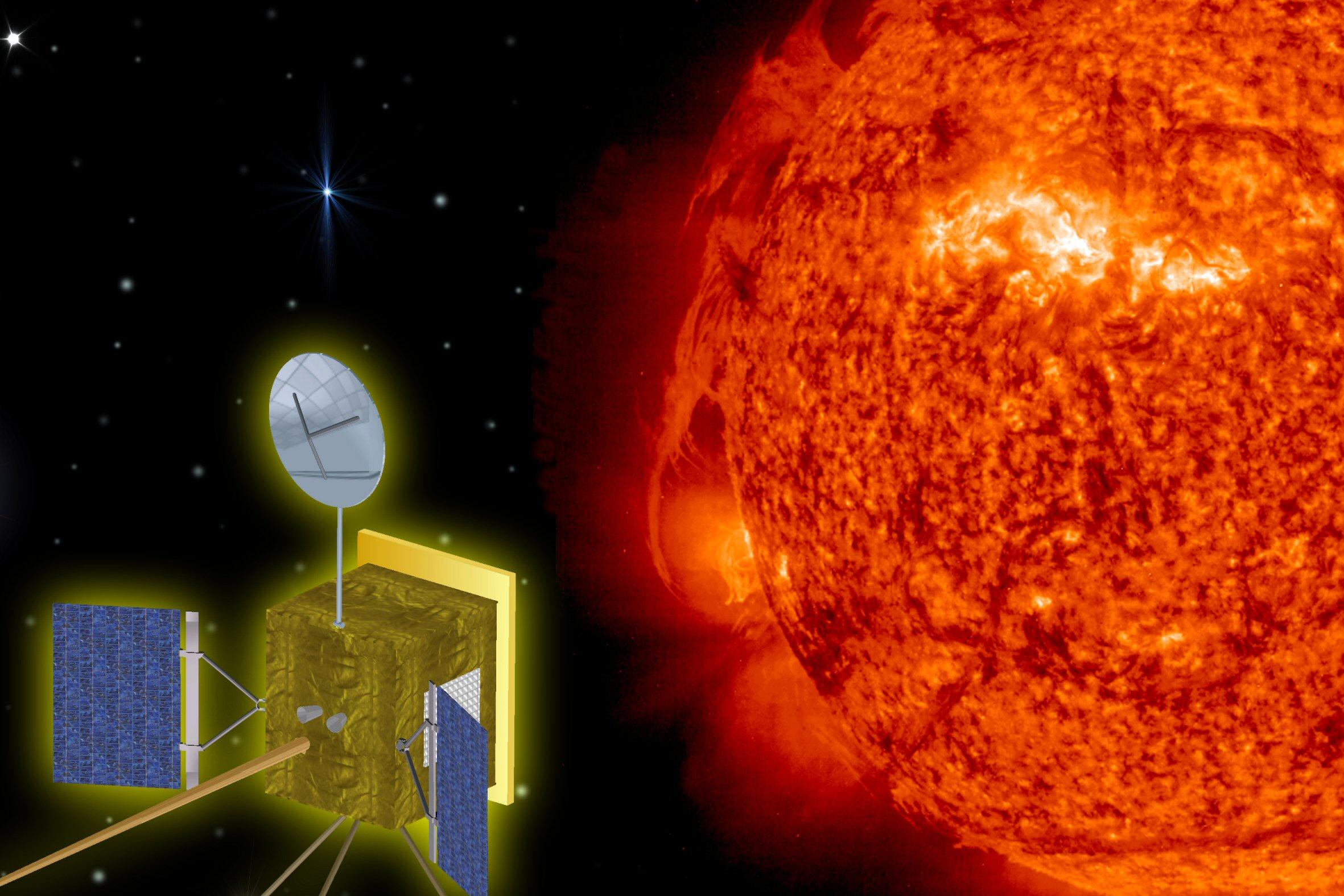
|
||
Future space telescopes for helio- and asteroseismology: COROT, SDO and Solar Orbiter |
|
Homepage |
| © 2009, Max Planck Institute for Solar System Research, Lindau |
webmaster 25-08-2005 |